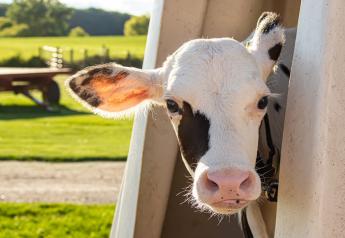4 Trends Shaping the Rural Economy

For 18 straight months, the rural economy has posted healthy and consistent growth, yet signs of weakness may be surfacing. That’s according to the May Rural Mainstreet Index (RMI) from Creighton University.
For May 2022, the RMI sits at 57.7. That is the lowest level since February 2021 and down from April’s 62. The index ranges between 0 and 100 with a reading of 50 representing growth neutral and is generated by a monthly survey of bank CEOs in rural areas of a 10-state region dependent on agriculture and/or energy.
“Much like the nation, the growth in the Rural Mainstreet economy is slowing,” says Ernie Goss, who chairs Creighton’s Heider College of Business and leads the RMI. “Supply chain disruptions from transportation bottlenecks and labor shortages continue to constrain growth. Farmers and bankers are bracing for escalating interest rates — both long-term and short-term.”
The May RMI found four key trends:
- Escalating costs of farm inputs pushed borrowing up to its highest reading since May 2020.
- On average, cash rents have risen by 10% to $250 per acre for non-irrigated crop land over the past 12 months.
- Around 40% of bankers expect 2022 farm income to be greater than 2021 farm income, while 26% of bankers expect 2022 farm income to be less than last year’s farm income.
- The depreciation of the U.S. dollar against the Mexican peso has been a stimulus to exports to Mexico, the top destination for the region’s farm products.
In 2021, the 10-state region exported $10.6 billion of farm commodities, including livestock. Of those exports, around 57% went to Mexico. Despite the rapid rise in the dollar against most currencies, the dollar has depreciated by almost 17% against the Mexican peso. This has made Rural Mainstreet agriculture products more competitively priced in Mexico, Goss reports.
Here is a state-by-state breakdown of exports of farm commodities to Mexico:
- Missouri: 84%
- Nebraska: 84%
- Kansas: 63%
- Iowa: 62%
- Colorado: 48%
- South Dakota: 44%
- Illinois: 38%
- North Dakota: 36%
- Minnesota: 29%
Other data of note includes the region’s farmland price index for May sank to a still strong 72 from 80 in April, marking the 20th straight month that the index has moved above growth neutral. Over the past several months, the Creighton survey has registered the most consistent and strongest growth in farmland prices since the survey was launched in 2006.
The new hiring index dipped to 61.5 from 64.0 in April. Labor shortages continue to be a significant issue constraining growth for Rural Mainstreet businesses.
The May farm equipment-sales index declined to 66.9 from April’s 67.6. This was the 18th straight month that the index has advanced above growth neutral. Readings over the past several months are the strongest string of monthly readings recorded since the beginning of the survey in 2006.
More than one of ten bankers expect the Federal Reserve to raise rates by 0.75% (75 basis points) at its June meetings. While 70% of bankers anticipate a 0.50% (50 basis points) rate hike at that Fed meeting.
Looking forward, bankers’ business confidence, which reflects bank CEO expectations for the economy six months out, sits at 40.4, which is up from last month’s 39.1. This marks the lowest back-to-back readings since the beginning of the pandemic in April and May of 2020.
The RMI, which started in 2005, represents an early snapshot of the economy of rural agricultural and energy-dependent portions of the nation. It focuses on 200 rural communities with an average population of 1,300.







